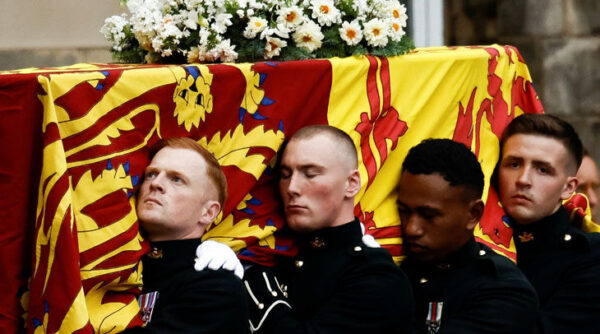The coffin of Queen Elizabeth II, who is in the state in London for four days later this week before her funeral next Monday, was prepared more than three decades ago. The coffin will close on an elevated platform known as a catafalque inside Westminster Hall, the oldest part of the Centennial Parliamentary Finca, starting Wednesday, after resting in Edimburg for a day from Monday later.
There are more details about the oldest monarch of Great Britain: The Queen’s coffin was made at least 32 years ago of English oak, which is increasingly rare these days with most wooden coffins now made of American oak, The Times reported Monday. It is full of lead, a real tradition to help preserve the body longer after its burial in a crypt, this time within the memorial chapel of King Jorge VI in the chapel of San Jorge in Windsor, west London .
It is said that lead makes the coffin airtight, which helps prevent moisture from entering, but makes it significantly heavier. The Queen’s coffin requires that eight coffin carriers move it. Kill that another made for the husband of the late queen, Prince Philip, who died last year and was buried in the crypt where she will soon be buried next to him.
Leverton & Sons, London entrepreneurs for the Royal Family since 1991, told The Times that they inherited the coffins at that time and do not know they had created them before. “It is made of English oak, which is very difficult to get,” added Andrew Leverton, who runs the company, added to the newspaper. “I don’t think we can use American OAK for a coffin now. It would be too expensive.”
Unique features
The coffin has been specifically designed to keep precious accessories safely on its lid. In the lie in the state and the funeral, that will include the crown of the imperial state, the orb and the scepter, which represent different aspects of the powers of the sovereign. Meanwhile, brass handles in the coffin are also uniquely designed for real coffins, with a company in the central English city of Birmingham responsible for them, according to The Times.
“It’s not something you can do in one day,” Leverton said. The coffin of Queen Elizabeth II first emerged on Sunday, covered with the real Scottish standard and a white heather crown, Dahlias and sweet peas of the gardens of the Balmoral estate where she died on Thursday.
He rested on Sunday at the Holyroodhouse Palace in the Scottish capital Edimburg. On Monday, she travels through the funeral car, followed by a procession that includes King Carlos III and other senior reais, to the San Giles Cathedral in the Royal Mile, where he will remain for 24 hours. She will then travel through a aircraft of the Royal Air Force in London, where she will sit at Buckingham Palace before being transferred to Westminster Hall on Wednesday.

